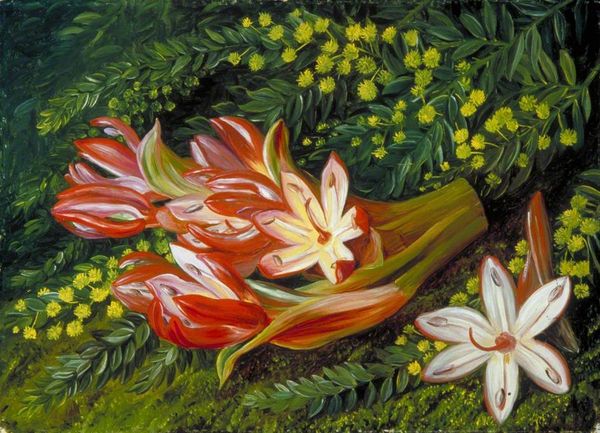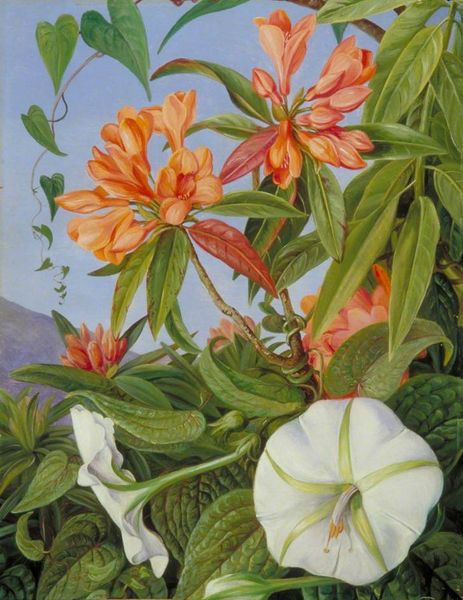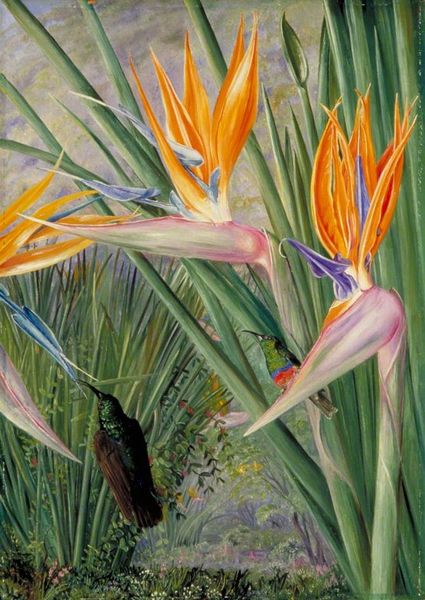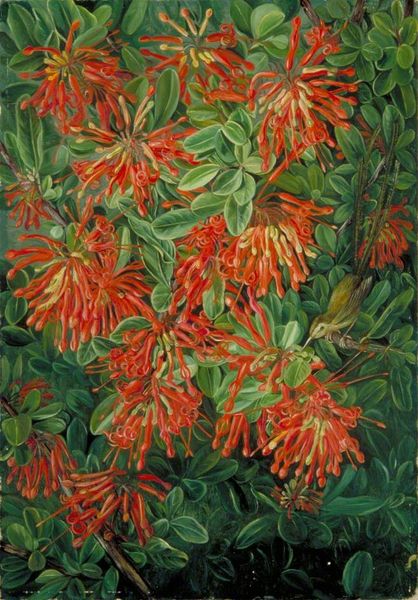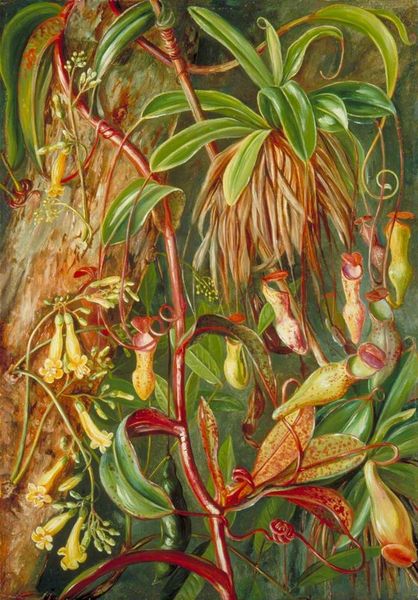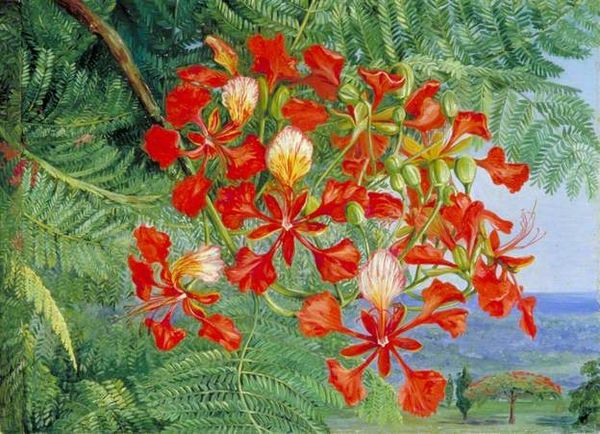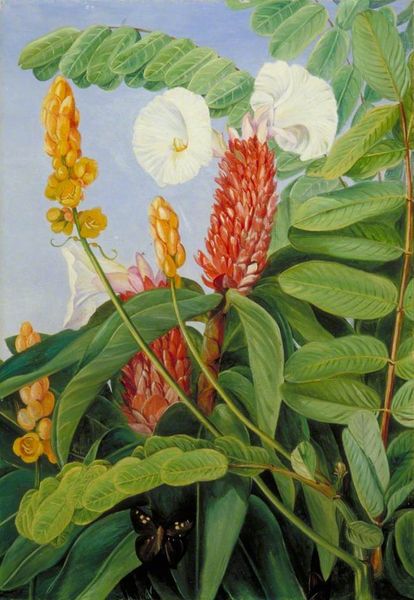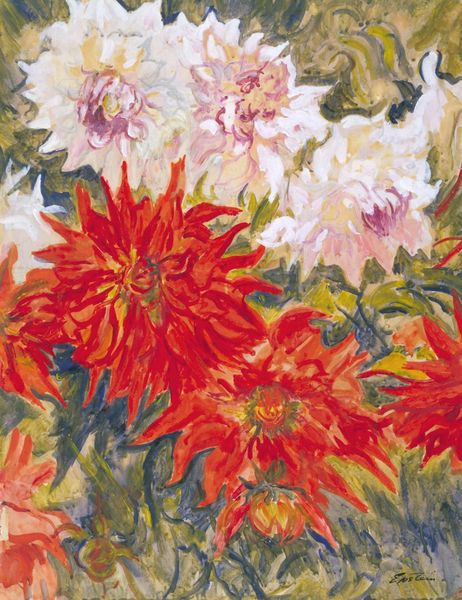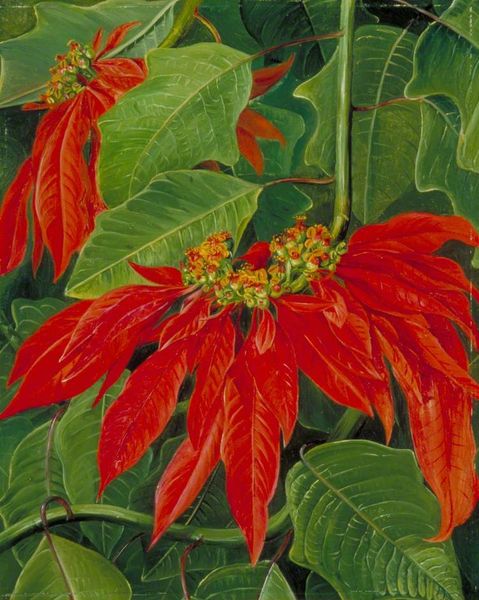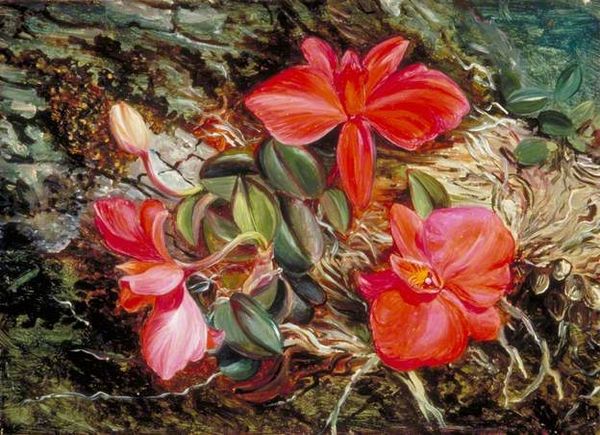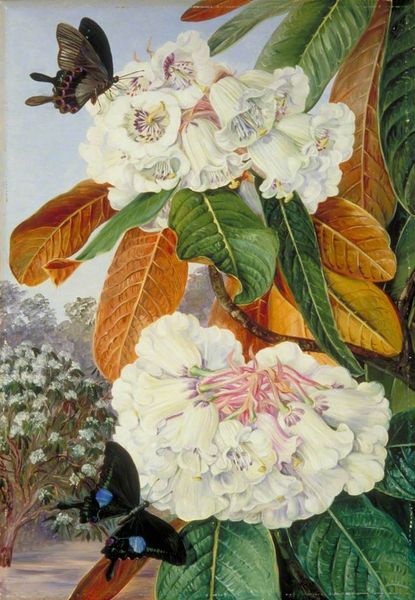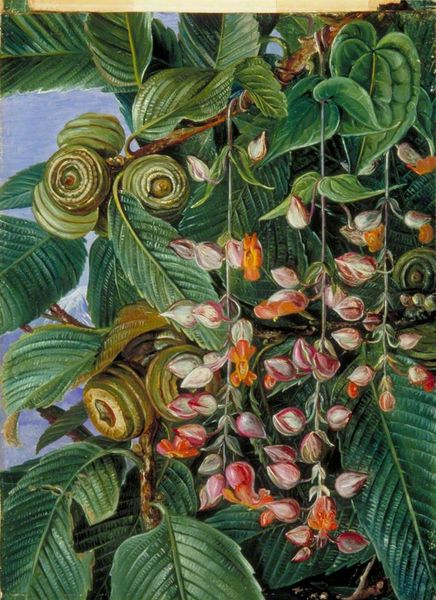
painting, oil-paint
#
tropical
#
painting
#
oil-paint
#
flower
#
oil painting
#
plant
#
botany
#
realism
Copyright: Public domain
Editor: This is Marianne North's "The Australian Parrot Flower," painted in 1880 using oil paints. I'm really drawn to its realism, almost like a scientific illustration. What do you see in this piece, particularly beyond its botanical accuracy? Curator: Beyond its stunning realism, I see a reflection of the Victorian era's intense interest in natural history, fueled by colonial exploration. North's dedication to painting on site is interesting: she's not just documenting a species, but actively participating in a broader colonial project of mapping and classifying the natural world. What implications do you think that act of documentation may have? Editor: That's a great point! I guess it's easy to admire the beauty without thinking about the power dynamics involved in "discovering" and representing new species from colonized lands. Curator: Exactly. Her paintings served a purpose back home – providing a glimpse into exotic flora while indirectly justifying imperial expansion. Look at the vibrant colors, almost assertive in their vibrancy. Doesn't that communicate a sense of possession, taming the wild for European consumption? Editor: Definitely. Now that you point it out, there's a boldness that feels less about appreciation and more about… assertion, I suppose? A capture and containment of nature for Western eyes. Curator: Consider the framing as well, the close-up view isolates the flower, further removing it from its complex ecosystem. It transforms the flower into an isolated spectacle. This work provides a glimpse into the interwoven relationship between artistic expression and the social and historical context, that we must acknowledge, in this case colonial attitudes towards the natural world. Editor: Wow, I never thought of it that way. I appreciate seeing how the simple act of painting a flower could hold so much history and commentary on those power structures. Curator: Precisely, recognizing these layered interpretations enriches our appreciation and provides insight to art history.
Comments
No comments
Be the first to comment and join the conversation on the ultimate creative platform.
